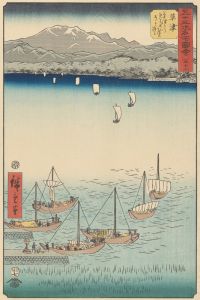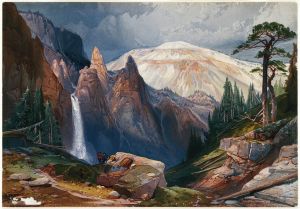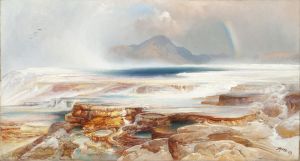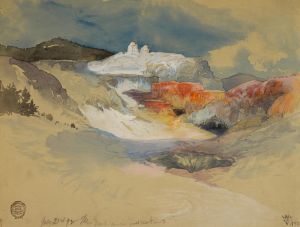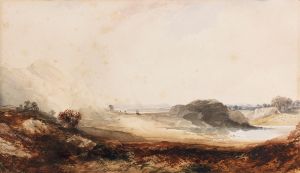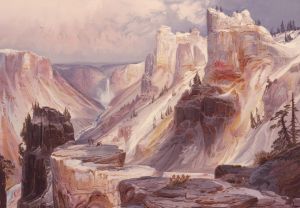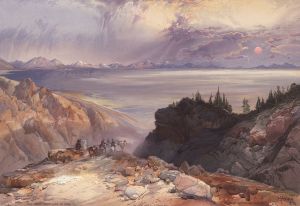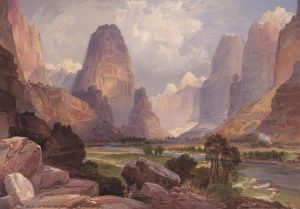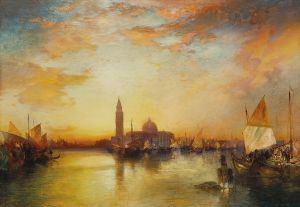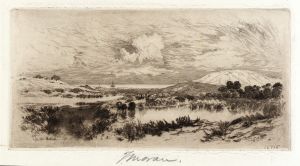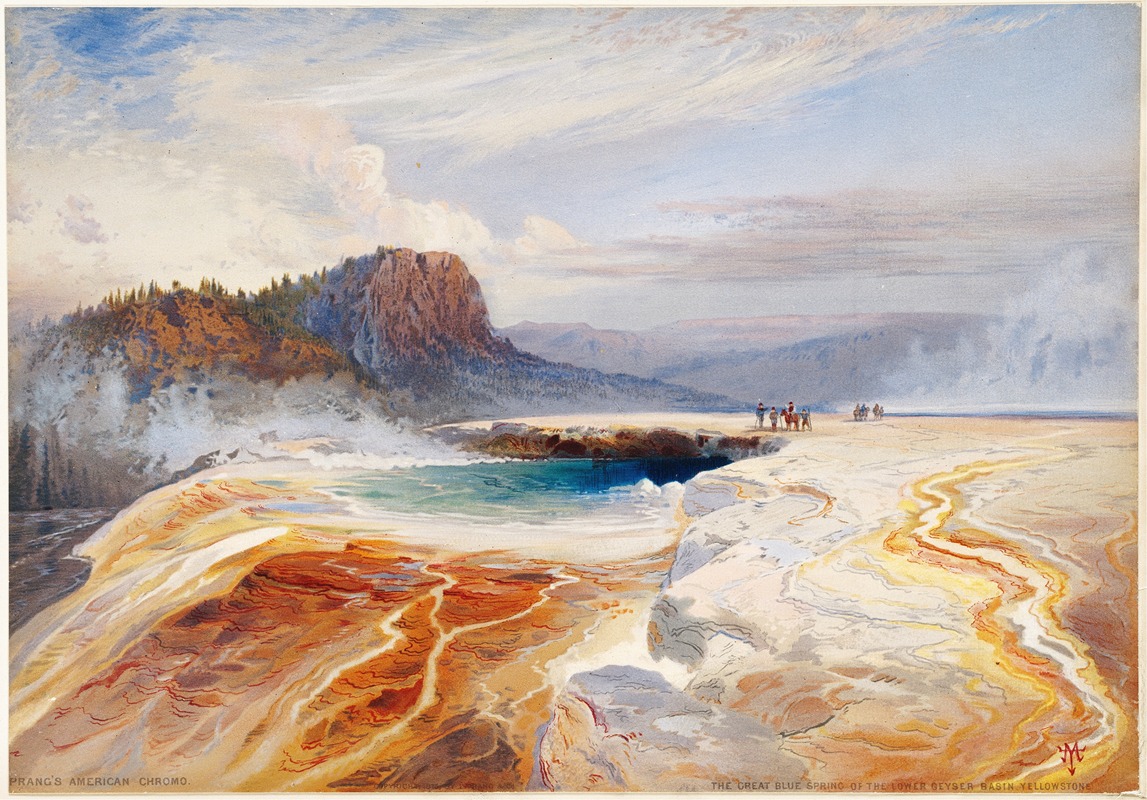
The Great Blue Spring of the Lower Geyser Basin, Yellowstone
A hand-painted replica of Thomas Moran’s masterpiece The Great Blue Spring of the Lower Geyser Basin, Yellowstone, meticulously crafted by professional artists to capture the true essence of the original. Each piece is created with museum-quality canvas and rare mineral pigments, carefully painted by experienced artists with delicate brushstrokes and rich, layered colors to perfectly recreate the texture of the original artwork. Unlike machine-printed reproductions, this hand-painted version brings the painting to life, infused with the artist’s emotions and skill in every stroke. Whether for personal collection or home decoration, it instantly elevates the artistic atmosphere of any space.
"The Great Blue Spring of the Lower Geyser Basin, Yellowstone" is a painting by the American artist Thomas Moran. Moran, born in 1837 in Bolton, England, emigrated to the United States with his family in 1844. He became one of the most prominent landscape painters of the 19th century, particularly known for his depictions of the American West.
Thomas Moran's work is often associated with the Hudson River School, a mid-19th century American art movement characterized by romanticized landscapes and a focus on natural beauty. However, Moran's contributions extend beyond this movement, particularly through his involvement with the exploration and documentation of the American frontier.
"The Great Blue Spring of the Lower Geyser Basin, Yellowstone" is one of Moran's many works inspired by his travels to Yellowstone National Park. Moran first visited Yellowstone in 1871 as part of the Hayden Geological Survey, led by Ferdinand V. Hayden. This expedition was crucial in providing visual documentation and scientific data that would later support the establishment of Yellowstone as the first national park in the United States in 1872.
Moran's paintings, including "The Great Blue Spring of the Lower Geyser Basin, Yellowstone," played a significant role in influencing public opinion and congressional support for the preservation of Yellowstone. His vivid and detailed depictions of the park's unique geothermal features, such as geysers, hot springs, and colorful mineral deposits, captured the imagination of the American public and lawmakers alike.
"The Great Blue Spring of the Lower Geyser Basin, Yellowstone" showcases Moran's skill in rendering the natural beauty and geological wonders of Yellowstone. The painting features a vibrant blue hot spring, surrounded by the rugged and varied landscape of the Lower Geyser Basin. Moran's use of color and light emphasizes the striking contrast between the azure waters of the spring and the earthy tones of the surrounding terrain. The composition draws the viewer's eye towards the spring, highlighting its central role in the scene.
Moran's attention to detail and his ability to convey the grandeur and majesty of the American wilderness are evident in this work. His paintings often include meticulous representations of geological formations, vegetation, and atmospheric conditions, providing a comprehensive and immersive experience for the viewer.
Thomas Moran's contributions to American art and conservation are significant. His works not only document the natural beauty of the American West but also played a pivotal role in the early conservation movement. Through his art, Moran helped to raise awareness about the importance of preserving natural landscapes for future generations.
"The Great Blue Spring of the Lower Geyser Basin, Yellowstone" remains an important piece in Moran's oeuvre and a testament to his legacy as an artist and conservationist. His paintings continue to be celebrated for their artistic merit and historical significance, offering a window into the awe-inspiring landscapes that inspired the creation of America's national parks.





